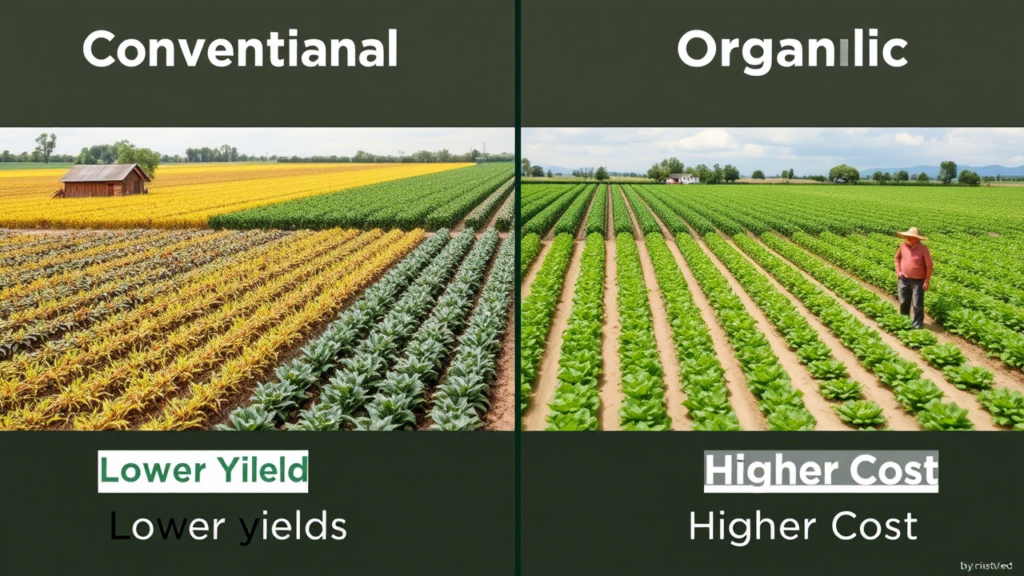Comprehensive Guide to Organic Farming: Advantages, Disadvantages, and Transition Steps
Table of Contents
- Introduction to Organic Farming
- Advantages of Organic Farming
- Disadvantages of Organic Farming
- Step-by-Step Guide to Transitioning to Organic Farming
- Summary Table: Pros and Cons of Organic Farming
- Conclusion
1. Introduction to Organic Farming
Organic farming is an agricultural system that prioritizes ecological balance, biodiversity, and sustainable practices. It avoids synthetic chemicals, genetically modified organisms (GMOs), and artificial additives, relying instead on natural processes like composting, crop rotation, and biological pest control. With growing consumer demand for healthier food and environmentally friendly practices, organic farming has surged in popularity. However, it also presents challenges such as lower yields and higher costs. This guide explores the pros and cons of organic farming and provides actionable steps for transitioning to this method.

2. Advantages of Organic Farming
a. Environmental Benefits
- Reduced Pollution: Eliminates synthetic pesticides and fertilizers, preventing soil and water contamination.
- Biodiversity Conservation: Promotes diverse ecosystems by avoiding monoculture and preserving habitats for pollinators and wildlife.
- Soil Health: Enhances soil fertility through organic matter (e.g., compost) and crop rotation, reducing erosion.
- Climate Resilience: Organic soils sequester more carbon, mitigating climate change.
b. Health Benefits
- Chemical-Free Produce: Lowers exposure to pesticide residues linked to health risks.
- Nutrient Density: Some studies suggest higher levels of antioxidants in organic crops.
c. Economic Benefits
- Premium Pricing: Organic products often sell at 20–30% higher prices.
- Cost Savings: Reduces reliance on expensive synthetic inputs over time.
- Government Incentives: Subsidies and grants available in many regions.
d. Social and Ethical Benefits
- Animal Welfare: Requires free-range practices and prohibits growth hormones.
- Community Support: Strengthens local economies through farmers’ markets and cooperatives.

3. Disadvantages of Organic Farming
a. Lower Yields
- Productivity Gap: Yields are typically 10–25% lower than conventional farming due to natural pest control and lack of synthetic boosters.
b. Higher Costs
- Labor-Intensive Practices: Manual weeding and pest management increase labor costs by 30–50%.
- Certification Expenses: Annual fees and inspections can cost thousands of dollars.
c. Market Challenges
- Consumer Misunderstanding: Some buyers distrust organic labels or perceive them as overpriced.
- Short Shelf Life: Lack of preservatives may reduce product longevity.
d. Transition Difficulties
- Time-Certification Process: Farms must undergo a 3-year transition period before earning organic certification.
- Knowledge Barriers: Requires training in organic techniques, which may be scarce.
4. Step-by-Step Guide to Transitioning to Organic Farming
Step 1: Research and Education
- Attend workshops or online courses (e.g., USDA Organic Resource Guide).
- Connect with local organic farmers for mentorship.
Step 2: Soil Preparation
- Test soil pH and nutrient levels.
- Amend soil with compost, green manure, or biochar.
Step 3: Crop Selection and Rotation
- Choose disease-resistant, region-appropriate crops (e.g., legumes for nitrogen fixation).
- Implement a 4-year rotation plan to prevent soil depletion.
Step 4: Pest and Weed Management
- Introduce beneficial insects (e.g., ladybugs for aphid control).
- Use mulching or mechanical weeding to suppress weeds.
Step 5: Organic Certification
- Select a certifying agency (e.g., CCOF or Ecocert).
- Document farming practices and submit to annual audits.
Step 6: Marketing Strategies
- Leverage organic certification logos on packaging.
- Explore direct-to-consumer sales via CSAs or online platforms.
5. Summary Table: Pros and Cons of Organic Farming
| Advantages | Disadvantages |
|---|---|
| Reduces environmental pollution | Lower yields compared to conventional farming |
| Enhances soil health and biodiversity | Higher labor and production costs |
| Eliminates synthetic chemical residues | Complex and costly certification process |
| Commands premium market prices | Limited access to organic markets in some areas |
| Supports ethical animal welfare practices | Shorter shelf life for organic produce |
6. Conclusion
Organic farming offers significant environmental, health, and ethical benefits but requires navigating challenges like certification costs and market access. By following a structured transition plan, farmers can adopt sustainable practices that align with global food safety and climate goals. While not a one-size-fits-all solution, organic farming remains a critical component of a resilient agricultural future.
